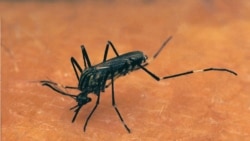Light Bulbs That Don't Attract Disease Carrying Insects
Artificial lighting often can act as virtual light magnets attracting a variety of disease carrying insects that can threaten human health. We’ll talk with the leader of a team of researchers who have found that light bulbs can be customized so that they won’t attract these potentially dangerous insects. And… Science World's Bob Doughty tells us that technicians and engineers working on the world's largest and most powerful atom smasher ran into a bit of a snag this past week that could delay its restart after a two year hiatus. Jessica Berman reports on a new study that finds the parasite that causes malaria also produces an odor which attracts mosquitoes, inviting more bites and infections. A new observatory that could help scientists learn more about black holes and supernovas was formally inaugurated and put into full operation recently. Philip Alexiou will have the story. Over 40 years ago, U.S. astronaut Eugene Cernan became the last human being to stand on the surface of the moon. Now the subject of a new documentary, “The last Man on the Moon, Cernan tells Greg Flakus that the U.S. should have a more vigorous space program. Reporting from Nairobi, Hilary Heuler tells us about the recent discovery of a variety of heat-resistant beans, something that could be quite important in the face of climate change. George Putic tells us that a group of European doctors has come up with a new therapy that could soon help millions of former TB patients who continue to have difficulty breathing. We'll have these stories and more on today's edition of VOA's Science, Health and Technology magazine... Science World.
Episodes
-
![]() February 12, 2024
February 12, 2024Science in a Minute: Mystery of Snowball Earth May Have Been Cracked
-
![]() February 06, 2024
February 06, 2024Science in a Minute: CERN New and Bigger Atom Smasher on the Way
-
![]() February 05, 2024
February 05, 2024Science in a Minute: NASA's PACE Mission
-
![]() January 31, 2024
January 31, 2024Science in a Minute: The Shrinking Wrinkled Moon












